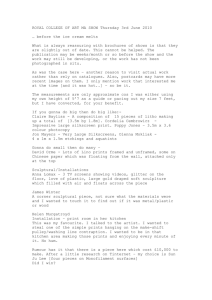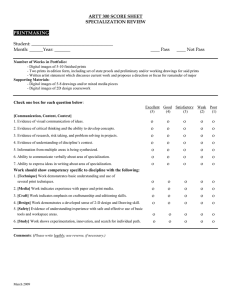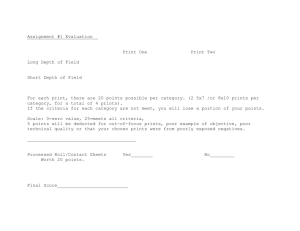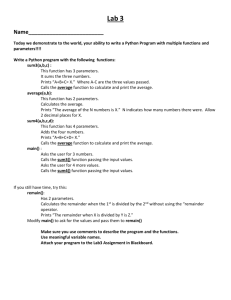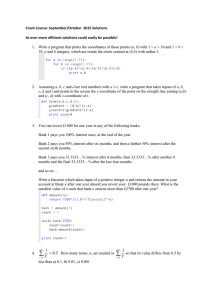Document 13362728
advertisement
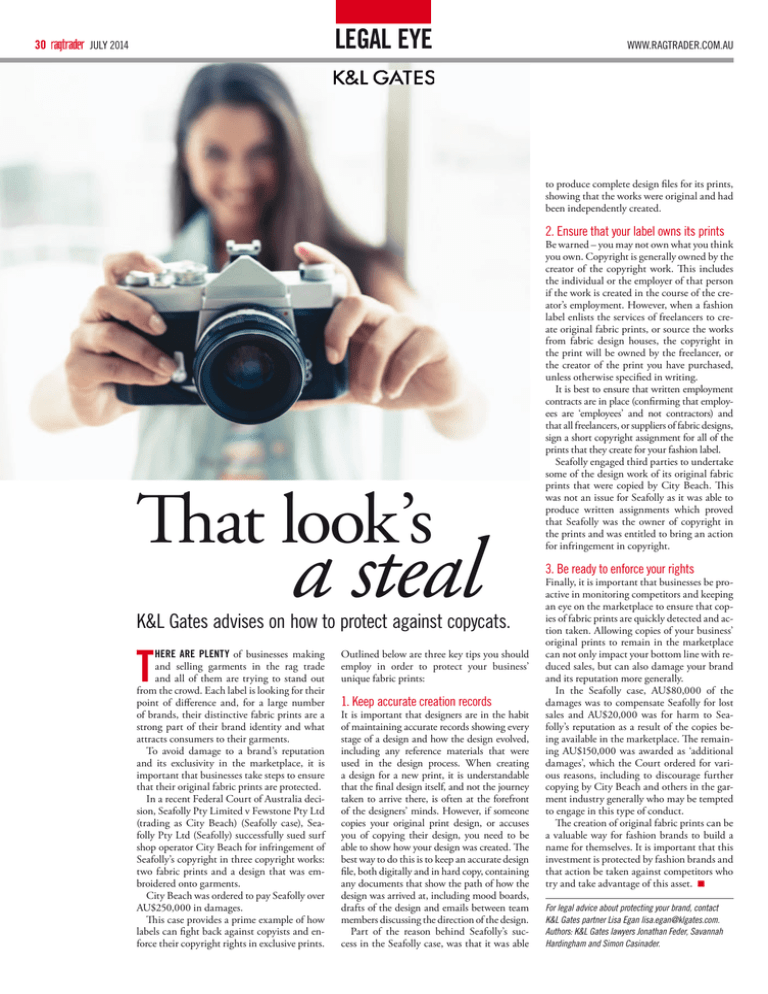
30 legal eye july 2014 www.ragtrader.com.au to produce complete design files for its prints, showing that the works were original and had been independently created. 2. Ensure that your label owns its prints That look’s a steal K&L Gates advises on how to protect against copycats. T here are plenty of businesses making and selling garments in the rag trade and all of them are trying to stand out from the crowd. Each label is looking for their point of difference and, for a large number of brands, their distinctive fabric prints are a strong part of their brand identity and what attracts consumers to their garments. To avoid damage to a brand’s reputation and its exclusivity in the marketplace, it is important that businesses take steps to ensure that their original fabric prints are protected. In a recent Federal Court of Australia decision, Seafolly Pty Limited v Fewstone Pty Ltd (trading as City Beach) (Seafolly case), Seafolly Pty Ltd (Seafolly) successfully sued surf shop operator City Beach for infringement of Seafolly’s copyright in three copyright works: two fabric prints and a design that was embroidered onto garments. City Beach was ordered to pay Seafolly over AU$250,000 in damages. This case provides a prime example of how labels can fight back against copyists and enforce their copyright rights in exclusive prints. Outlined below are three key tips you should employ in order to protect your business’ unique fabric prints: 1. Keep accurate creation records It is important that designers are in the habit of maintaining accurate records showing every stage of a design and how the design evolved, including any reference materials that were used in the design process. When creating a design for a new print, it is understandable that the final design itself, and not the journey taken to arrive there, is often at the forefront of the designers’ minds. However, if someone copies your original print design, or accuses you of copying their design, you need to be able to show how your design was created. The best way to do this is to keep an accurate design file, both digitally and in hard copy, containing any documents that show the path of how the design was arrived at, including mood boards, drafts of the design and emails between team members discussing the direction of the design. Part of the reason behind Seafolly’s success in the Seafolly case, was that it was able Be warned – you may not own what you think you own. Copyright is generally owned by the creator of the copyright work. This includes the individual or the employer of that person if the work is created in the course of the creator’s employment. However, when a fashion label enlists the services of freelancers to create original fabric prints, or source the works from fabric design houses, the copyright in the print will be owned by the freelancer, or the creator of the print you have purchased, unless otherwise specified in writing. It is best to ensure that written employment contracts are in place (confirming that employees are ‘employees’ and not contractors) and that all freelancers, or suppliers of fabric designs, sign a short copyright assignment for all of the prints that they create for your fashion label. Seafolly engaged third parties to undertake some of the design work of its original fabric prints that were copied by City Beach. This was not an issue for Seafolly as it was able to produce written assignments which proved that Seafolly was the owner of copyright in the prints and was entitled to bring an action for infringement in copyright. 3. Be ready to enforce your rights Finally, it is important that businesses be proactive in monitoring competitors and keeping an eye on the marketplace to ensure that copies of fabric prints are quickly detected and action taken. Allowing copies of your business’ original prints to remain in the marketplace can not only impact your bottom line with reduced sales, but can also damage your brand and its reputation more generally. In the Seafolly case, AU$80,000 of the damages was to compensate Seafolly for lost sales and AU$20,000 was for harm to Seafolly’s reputation as a result of the copies being available in the marketplace. The remaining AU$150,000 was awarded as ‘additional damages’, which the Court ordered for various reasons, including to discourage further copying by City Beach and others in the garment industry generally who may be tempted to engage in this type of conduct. The creation of original fabric prints can be a valuable way for fashion brands to build a name for themselves. It is important that this investment is protected by fashion brands and that action be taken against competitors who try and take advantage of this asset. ■ For legal advice about protecting your brand, contact K&L Gates partner Lisa Egan lisa.egan@klgates.com. Authors: K&L Gates lawyers Jonathan Feder, Savannah Hardingham and Simon Casinader.
